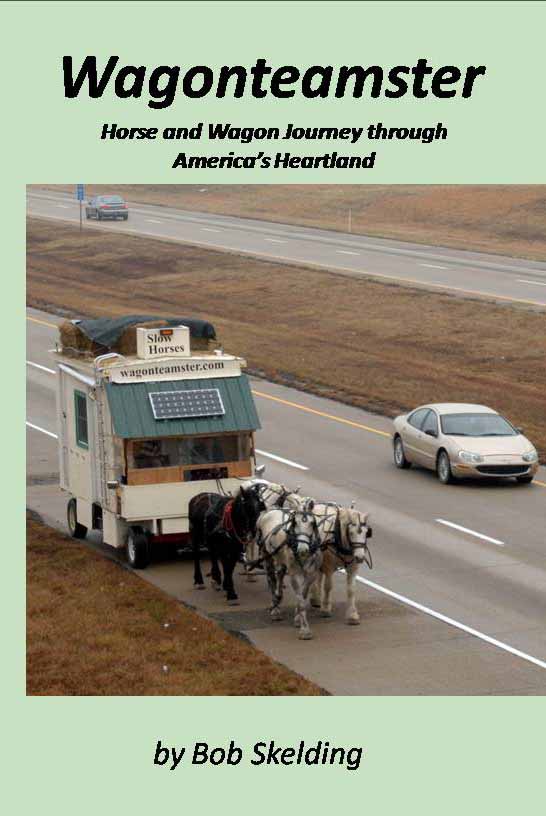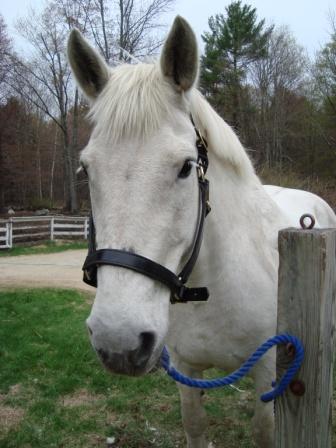|
|
|
Sneak Preview of a New Book Available In a few months |
|
|
||||||||||||||||||||||||||||||||
|
|
|
Wagonteamster |
|||||||
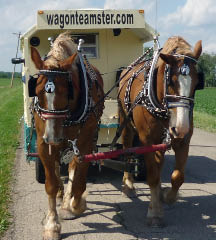 |
|||||||
|
WAGONTEAMSTER .COM |
|||||||
|
The Making of a Horseman As a young boy, I used to marvel at the presence that certain men had around horses. I gazed in wonder as my 140 pound grandfather would dominate large draft horses and bend them to his will. “Why does a stallion, that is mostly wild, readily accept direction from a man one fifteenth his size, when he could easily just run over the man or just dance away”? I wondered. The old timers used to say, “A horseman is born with horse sense. The horse instinctively knows that the horseman is the boss and they have to obey him”. Hollywood would later portray such men as ‘Horse Whisperers’ and also attribute magical qualities to them. Long after I started my 6000 mile trek in a horse drawn wagon I learned the truth. A horseman isn’t born with these abilities; he or she has to learn them. To become a horseman, you must first become part of the herd. Not only that, you have to grow to be the leader of the herd. |
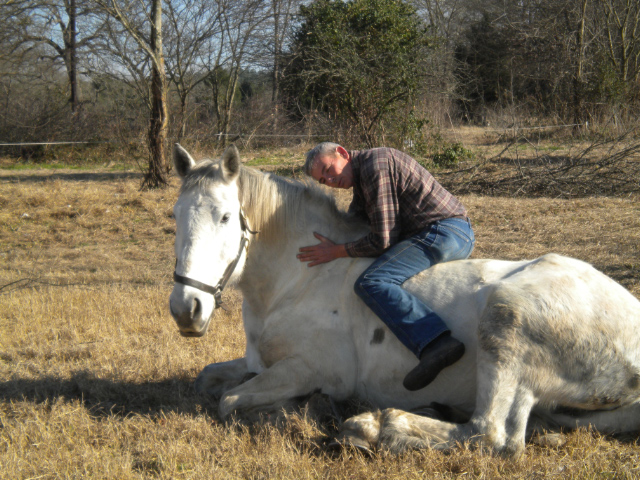 |
|||
|
|
|||
|
Here are some facts about horse behavior and communication as I understand them: Horses have evolved into highly social animals. To them the herd is everything. All horse communication is based upon things that affect the herd and interactions within the herd. There is no such thing as democracy within a horse herd. Every animal has a rank within it and knows his or her place. They don’t even want a democracy. They are most comfortable when there is a clean pecking order and they know their own place. A lead horse within one herd can be the lowest ranking horse in another. Different activities can result in different pecking orders. The primary leadership ranking can be seen at meal times. The highest ranking horse gets first choice of the food. But for other activities, like; when it’s time to graze, who goes first on a trail, or who greets strangers, other horses within the herd can assume the leadership role. Ranking within the herd is not always about which horse is the strongest, fastest or the best kicker. The most important attribute which determines the leader is attitude. Sometimes a member of the herd will yield his or her position, based solely upon the attitude of a new member. Sometimes, a horse whose position is being challenged will defend his or her ranking – that’s when strength, kicking and biting ability also become important. But attitude still remains the most important. Horse communications are only about 10% audible. The remainder is visual, touch and subliminal. There are people that doubt that horses communicate with a form of ESP, but none of these doubters are horsemen. When driving a team down the road, I can often just cast my thoughts on of one of the horses and he’ll turn his head to look at me. A herd isn’t completely rigid; there are smaller organizations within it. The most common is the buddy system. Usually, most horses will pair with another animal and become best friends, often even sharing the same grain bowl. When a horse loses his or her buddy, they can grieve for the animal for years. As tight as a herd is, a team of draft animals is much tighter. A good horseman is one that gets to be the leader of a herd. An even better experience is when a team of horses also accepts the person as the leader of a team. Horses think of people as two legged horses. To them, you’re just another horse that could either be inside or outside the herd. I could write pages on this topic, but I think I’ve covered the most important concepts.
|
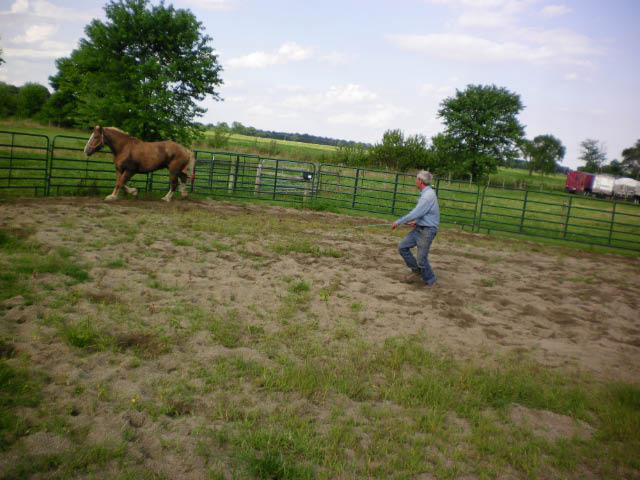 |
|||
|
The best way to learn horse communication is to spend some hours watching a herd interact. Pay particular attention to: where each member stands in relation to the others, ear and neck positions, mock kicking, mock charges, mutual grooming, tossing of the head and body checks. Next, start moving in and around the horses. Be respectful of their size and strength, but don’t move within the herd with any fear. Kindness is good, but chasing away a disrespectful horse does more. If you watch the herd long enough, you’ll see where the lead mare will get junior members to follow and obey her by first chasing them away (it’s kind of the opposite from normal human behavior). Most importantly, demand respect. Respect their ability to possibly hurt you, but don’t let them get away with showing any dominate behavior towards you. The best thing you can do is chase them away (just like the lead mare would do). If you have to extend your reach beyond their hooves, flick a lead rope at them or give them a tap with a buggy whip or stick. Also, bend them to your will by backing them up or spinning them in a circle with a lead rope. The best thing, is to work them in a round pen or on a lounge line. When working with one or more horse, always be careful of where you are. The easiest way to get hurt is if you are physically caught between two horses that are interacting with each other. If you are next to a horse, keep a hand on him. If he moves, you can feel it right away and just move out of the way. If he starts to crowd you, chase him away. As your confidence and ability to communicate grows, more and more you’ll be able to control a horse with your will. This comes as they begin to accept them as their leader. Once you’ve reached this stage, you still have to become the leader for other behaviors as well (remember, there are different leadership roles for different activities within the herd). Try to mimic horse behavior for these activities. There is a simple experiment to tell if you’ve achieved the proper position within a herd. Walk into the middle of the horses and stand still. If they all consider you the dominate ‘horse’; one at a time, they will walk over and display a submissive gesture. Usually, this will be either a head rub, they’ll place their nose, either on your shoulder, or under your armpit, or sometimes they’ll just nonchalantly walk over and start grazing near you. Other people will then start saying that you’re a horseman. But in your heart, you’ll realize that you’re just starting to know something about horses, and you’ll realize how much more you really have to learn. |
|||
